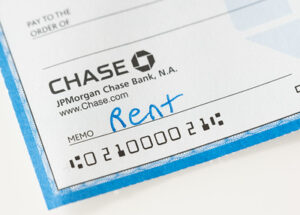One of the most interesting (and not in a good way) paradoxes about the current economy is the rising number of loan and credit card delinquencies at a time of near-full employment. Employers have created more jobs than the workforce can fill, and yet, consumers are still struggling. Consumer debt in the US is currently about $18 trillion.
And the struggle isn’t limited to consumers. The number of highly leveraged companies is also extraordinarily high. Globally aggregated corporate debt exceeds $300 trillion. Debt is never great, and despite what some people (usually those in the financial industry) would have you believe, there is no such thing as “good debt.”
Debt is just plain bad, and the more debt one has, the worse off one is. The Fed is trying (and has been for the past couple of years) to slow inflation by managing interest rates. While US inflation has declined from its most recent peak of 9.1% in June 2022, the Fed still struggles to recapture an inflation rate of less than 2%. Higher interest rates are supposed to discourage consumer spending on big-ticket items like houses and cars and encourage saving. So far, that hasn’t really worked.
But as more economic data flow in, it’s becoming clear that consumers are suffering under the weight of their debts. In the first quarter of 2024, the amount of household debt US consumers owe jumped by 8.5% compared to the same time last year. The vast majority of the increase comes from increased housing costs.
Debt and delinquencies among the youngest adult consumers are both rising. Weighing down the youngest adult consumers makes it more difficult for them to enter the housing market, save for emergencies, save for retirement, pay healthcare costs, and repay their student loans.
Economy makes movement in the housing market tough
High housing costs also make it difficult for homeowners to exit the housing market or downsize from a larger home to a smaller one. Many older Americans count on the equity in their homes as a significant component of their retirement plans, but downsizing as a housing strategy is currently not able to reduce the overall cost of housing significantly.
The demand for homes right now is exceptionally high, and the US housing market has been in an under-supply condition since 2017. The US rental market is even worse: the available inventory of rental properties has been unable to meet demand since 2014. These conditions make it very hard for people to move in and out of the housing market freely.
Under these circumstances, it’s not hard to figure out why community college enrollment is down sharply. It’s very clear to would-be students that a community college education will not provide enough salary to pay the bills. Even a two-income household may not generate enough cash to manage the substantially increased cost of housing.
To remain open, community colleges will need to focus on training people for high-demand, high-wage jobs. And they need to do that in a way that enables people to gain a foothold in what seems to be shaping up as an uncertain economy. And they had better prepare these programs quickly. If the economy turns sour, and both employers and consumers are heavily debt-laden, people may turn to community colleges for help. It would be a shame if these institutions have nothing of value to offer.
Photo Credit: barrettyman , via Flickr















